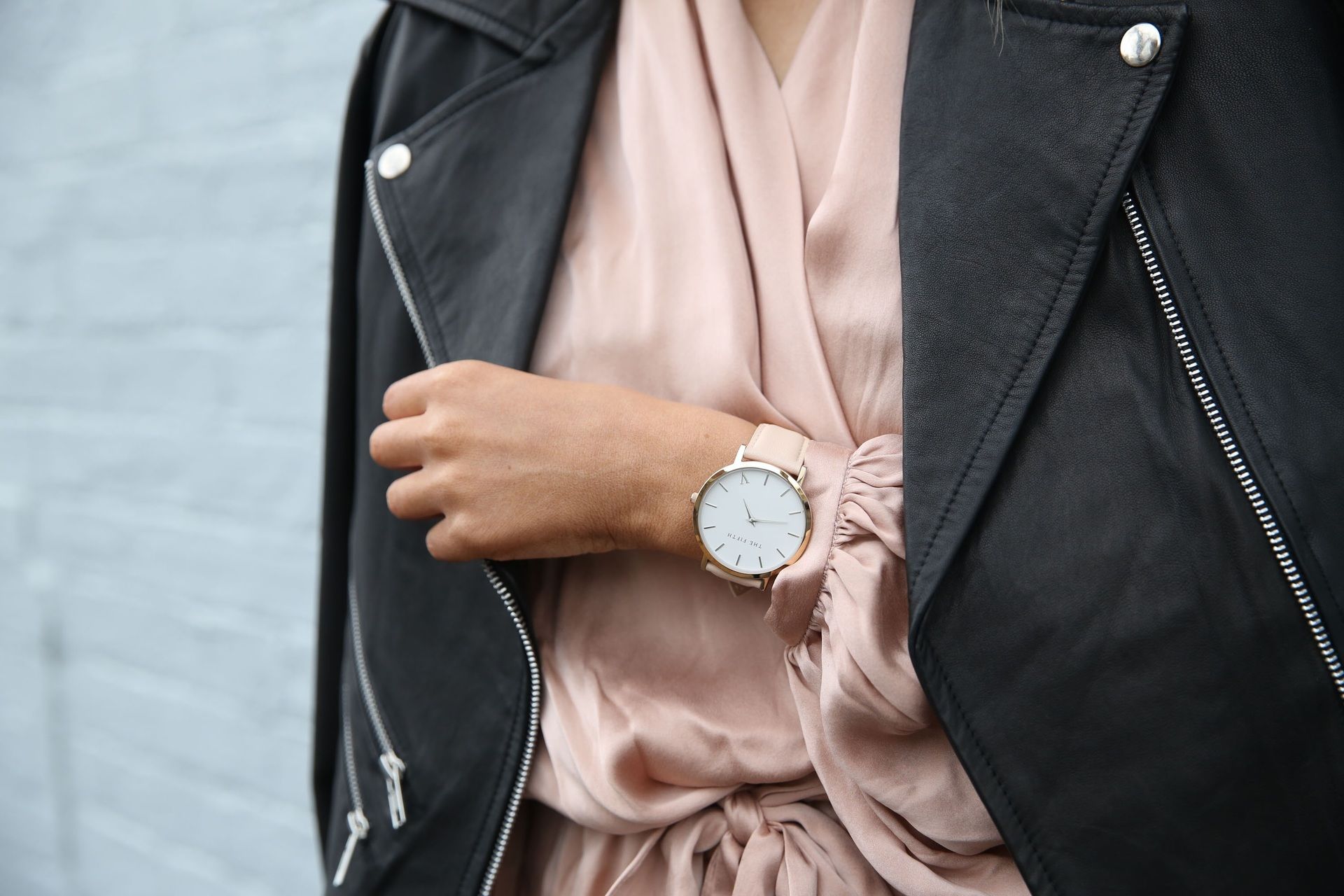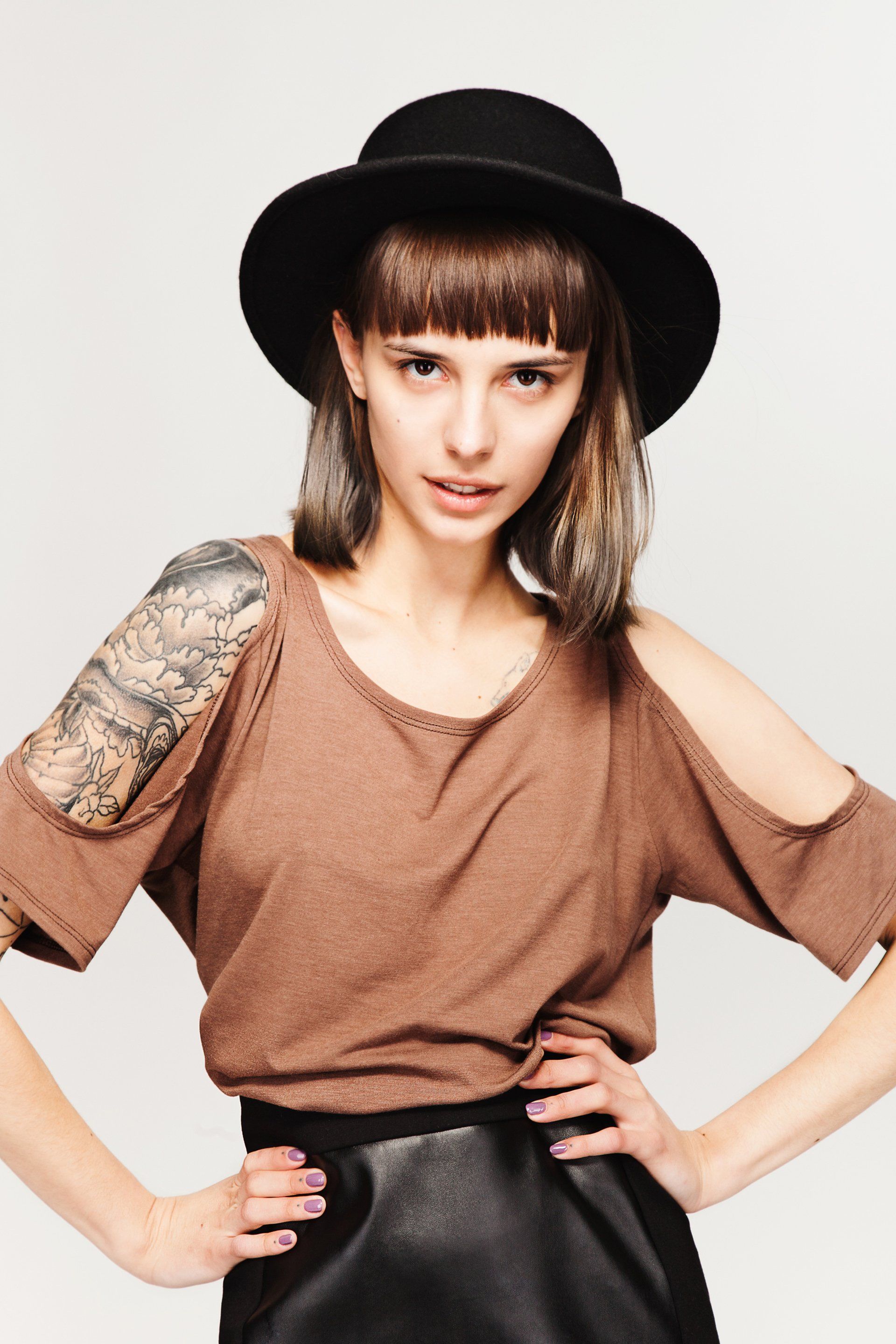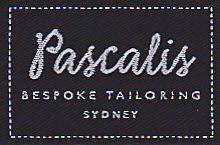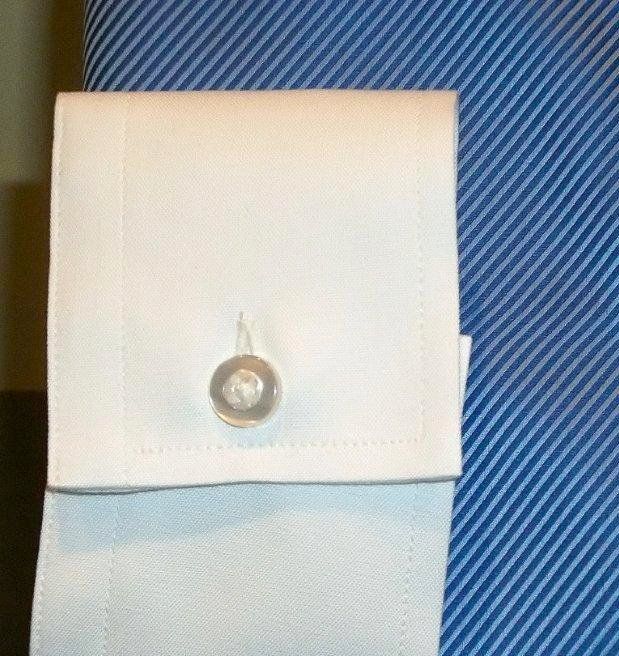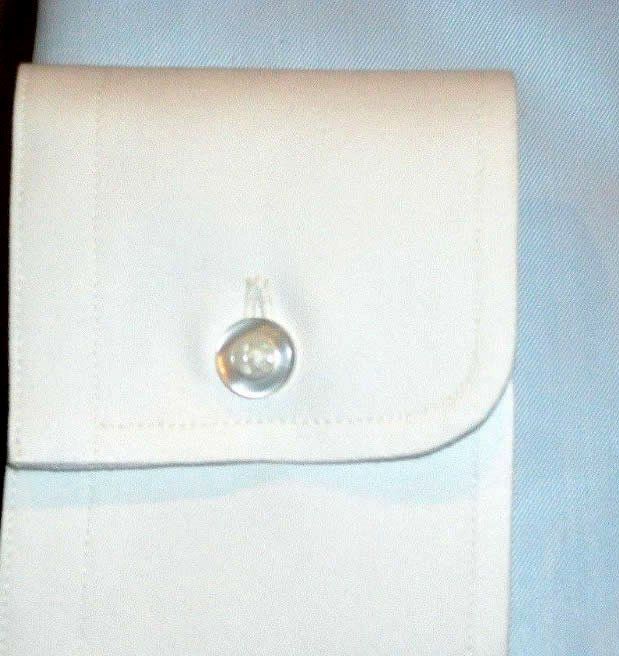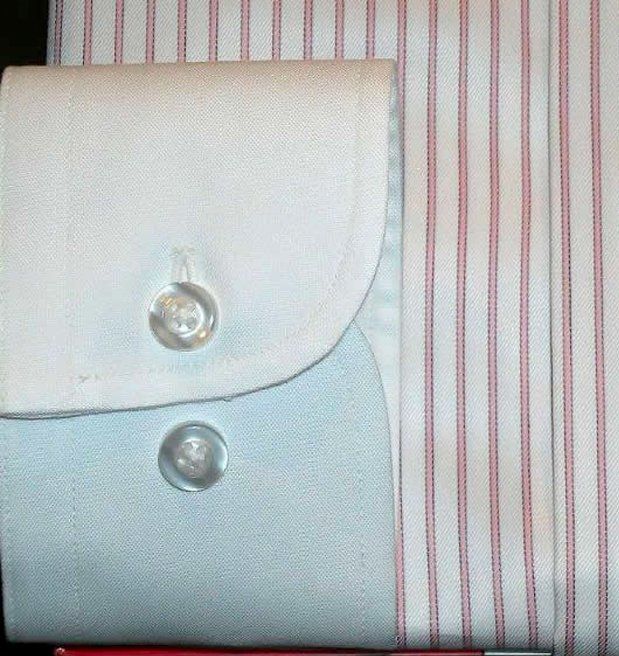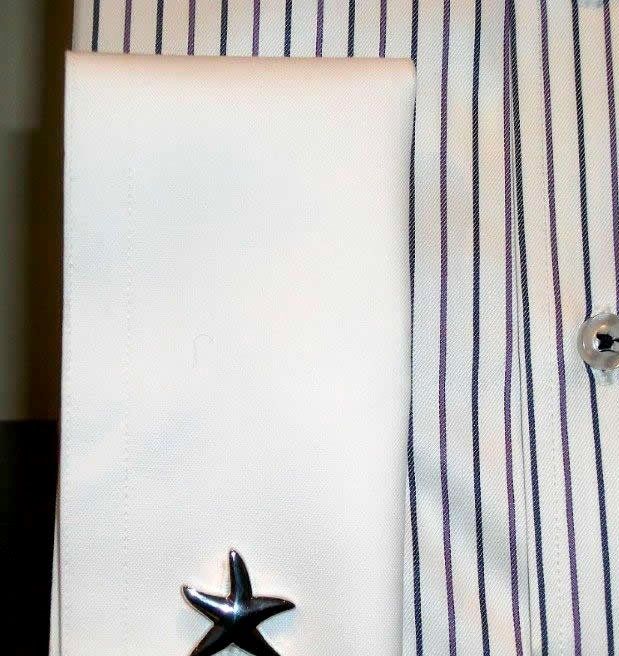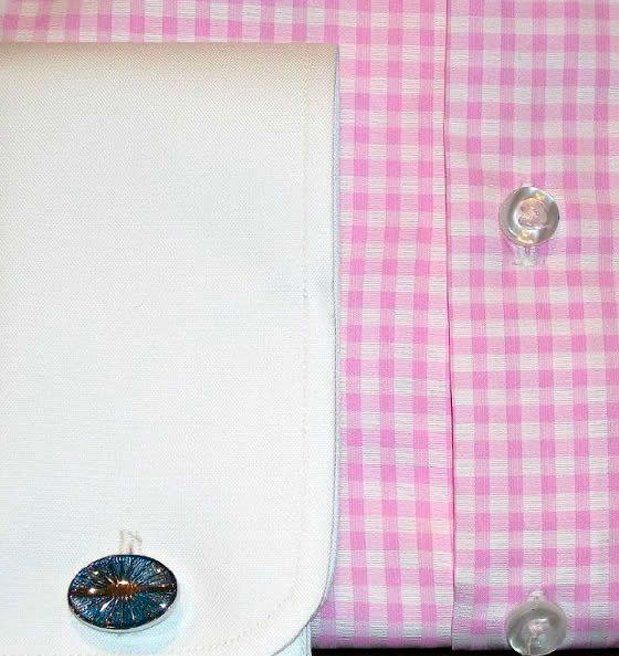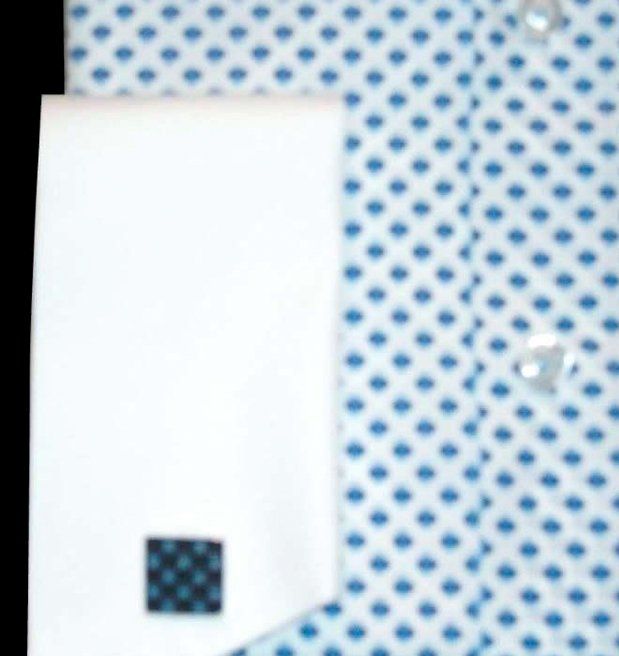Collars & Cuffs Style
The most important aspects of the bespoke shirt
From whichever cloth, pattern, collar and cuff you choose for your Pascalis Bespoke Tailored Shirt, the collar and cuff are the most visible under your jacket. The bespoke process allows for these components to do justice to the owner’s face and arm length.
They are the most important aspects of the bespoke shirt, which enhance the aesthetic look with a comfortable fit for the neck, chest-torso and wrists.
Men's dress shirt collars come in all different colours, sizes, and styles. The right collar on the right type of face is an important combination to give you a feeling of confidence, whether it is a public venue, or in a business conference environment—a good collection of shapes and curves will bring out the best in you. A collar's job is to properly frame the face, accentuating a man's facial strengths.
Here we define a few important terms for understanding a shirt collar:

The Windsor Collar (Or The Popular Point Collar)
The point collar is the most common turn-down collar style, found on approximately 90% of men's dress shirts. Having its origins in the military uniforms from the turn of the 20th century, the variations of the point collar have established themselves as the de facto collars of the world due to their ability to remain neutral (an important characteristic for manufacturers looking for a collar type that will appease the majority of wearers). Key characteristics are that the collar is cut so that the "points" are reasonably close together, sometimes to the extent that they almost hide the top portion of a tie. In more extreme versions of the collar, longer more closely set points tend to draw the eye down towards the tie and away from the face, while a more moderate cut frames the tie and completes the arrow effect pointing at the face. The point collar is most at home on a man with round facial features; the collar's elongating effect helps to even out the look of his face. Men with thin faces should avoid these collars, as they will only accentuate this feature.
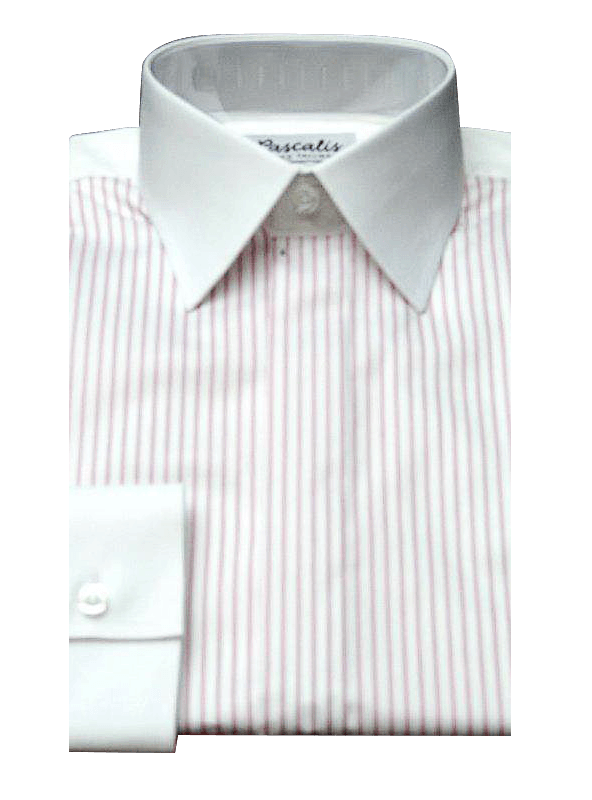
The Long Peak Half Way Collar (Or Classic Straight Point Collar)
This is clearly distinguishable by the small spread between the collar points. On this particular example, we see a 20 mm tie space and a collar point length of about 70 mm. All of a collar's parts can be adjusted to ensure proportion for the individual.
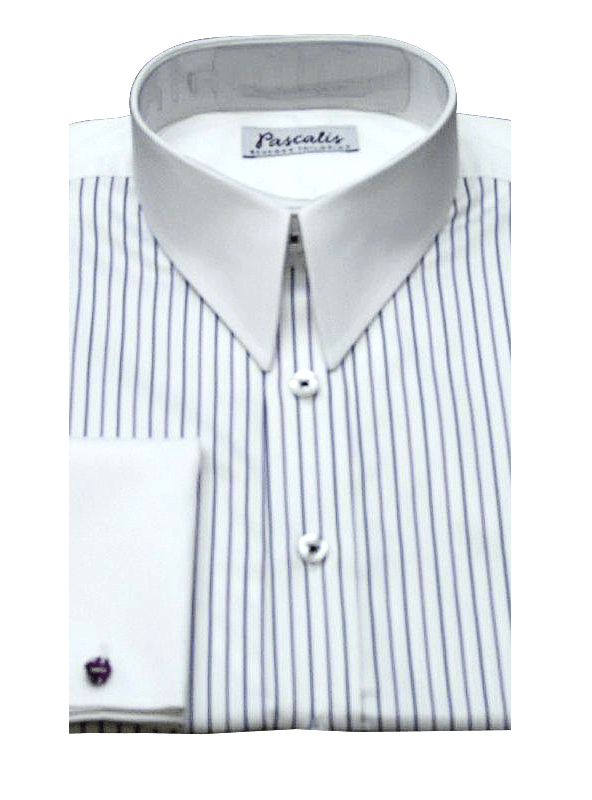
The Narrow Long Peak Collar (Or Narrow Straight Point Collar)
Here we see another version of the straight point, however in this version notice the even smaller spread between the collar points accentuated by the lack of a tie space altogether. The collar point length here is closer to 90 mm, a clear indicator that this collar is meant to help a round faced man look less plump.
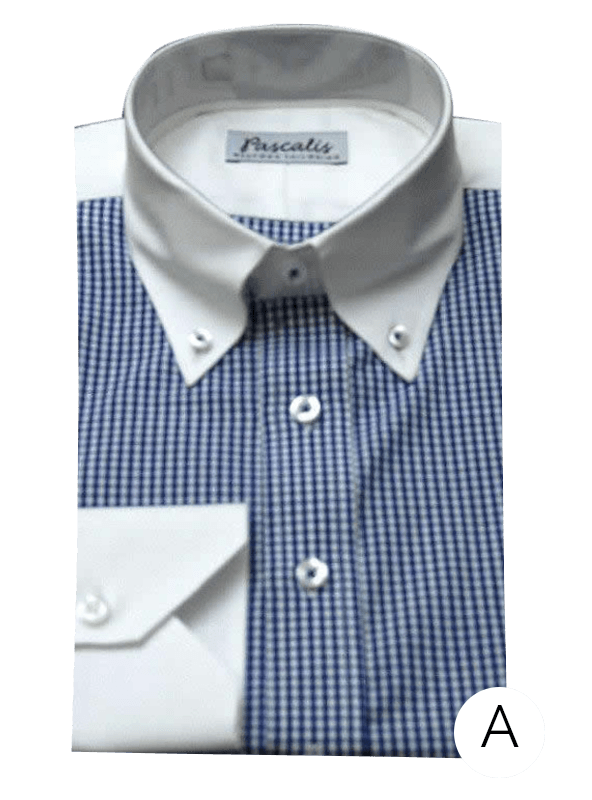

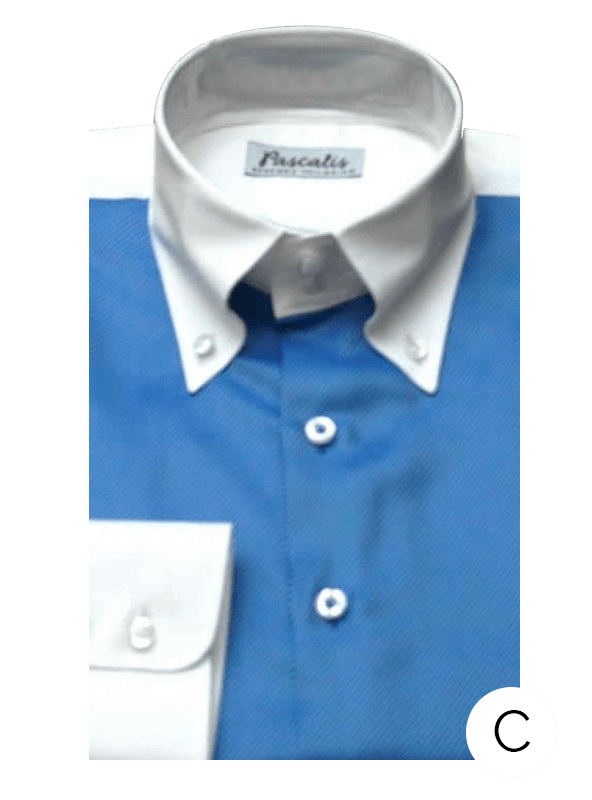
The Button Down Collars (Or Button Down Point Collars)
First worn by polo players and became very popular with the Ivy leaguers in the Harvard, Princeton and Yale Universities of Nth American campuses. The button-down point collar style is most often seen on more casual shirts. These collars have small buttonholes at the very tip of each point, corresponding to a small button on each side of the shirtfront. This collar can be worn successfully with a tie; it is the least formal of all the collar choices and is an excellent choice for the man looking to leave the tie behind. The buttons on the collar, however, should always be fastened down. A similar but less common option for a man is the hidden button down collar.
A. USA Button Down Collar:
B. Tripple Collar Two Button High:
C. High Button Down Collar:

The Long Peak Hidden Button Down Collar
This collar is a variation of the Button Down Collar shirt, however, the small buttons are hidden behind the collar and are fastened to a separate sleeve behind the collar so they can’t be seen, but still perform the same function of the original button down collar to keep the collar peaks from lifting up from the shirt front.
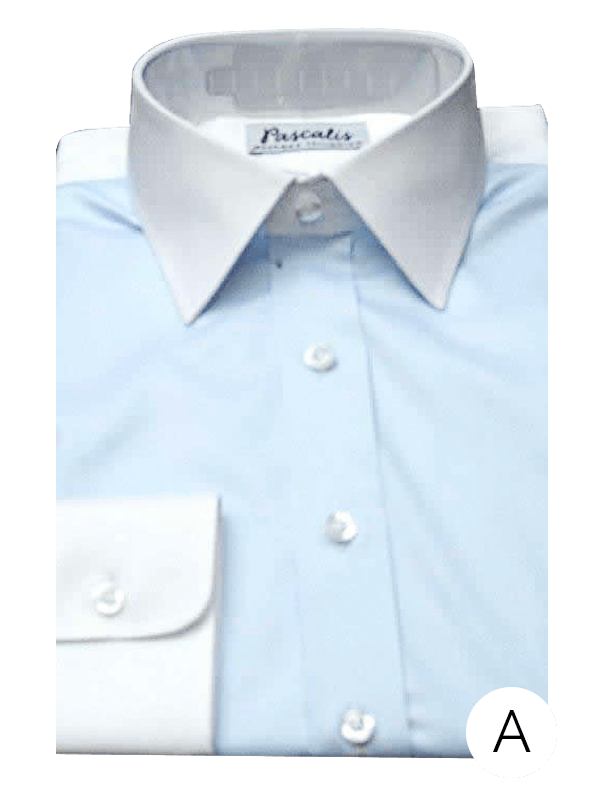
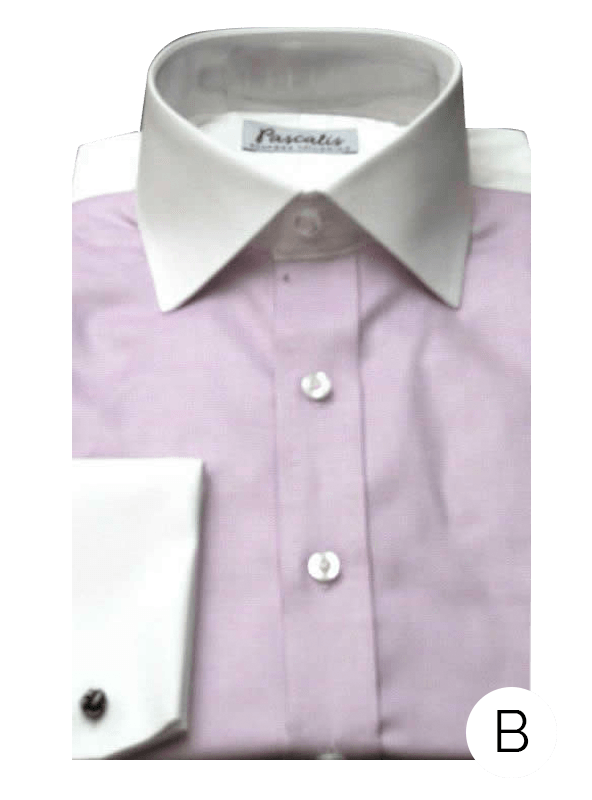
The Cutaway Collars (Or Spread & Cutaway Collars)
the second popular style is the cutaway, or spread collar. These collars have the points ‘cut away’ or spread—revealing more of the upper shirt area and leaving additional room for larger knots such as the Windsor. Like the point, spread collars come in a variety of widths, with more moderate ones resembling slightly flared point collars, while more extreme versions can be nearly horizontal. The particular dimensions are best left to the wearer's preference and body type, with very wide spreads tending to accentuate wider figures while creating a more fully proportioned look on thin gentlemen. With that being said the spread collar is most at home on a man with thin or long facial features; the collar's widening effect help to even out the look of the face. Men with round faces should avoid these collars, unless they plan on wearing them without a tie.
A. The Halfway Cutaway Collar
B. The Long Peak Cutaway
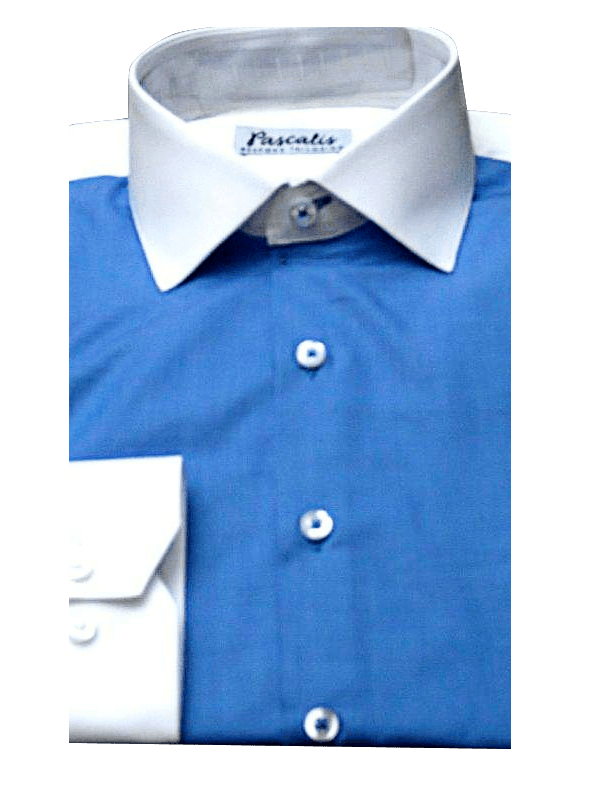
The Medium Cutaway Collar (Or Medium Spread Cutaway Collar)
It is a close cousin to the point collar, separated only by the interpretation of the size of its spread. This collar point length is a bit shorter; it's primarily designed for the man whose face falls between the extremes. Viewed as a safe choice; it is a great collar for those looking to slowly explore the benefits of conservative acceptance.
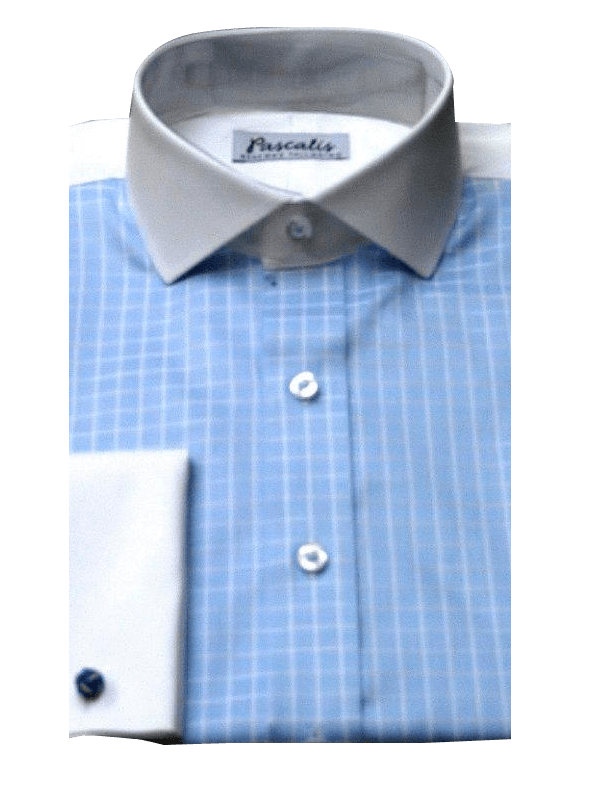
The Cutaway Collar-pin-stitch (Or Classic Spread Collar-pin-stitch)
the spread of this collar leaves no doubt as to its heritage. A classic in bespoke circles for almost 100 years, this collar was made famous by the likes of English royalty and Hollywood's very popular Actors. Also popular with European men. Pair this collar with a thin face or small boned man, and you have a perfect match.
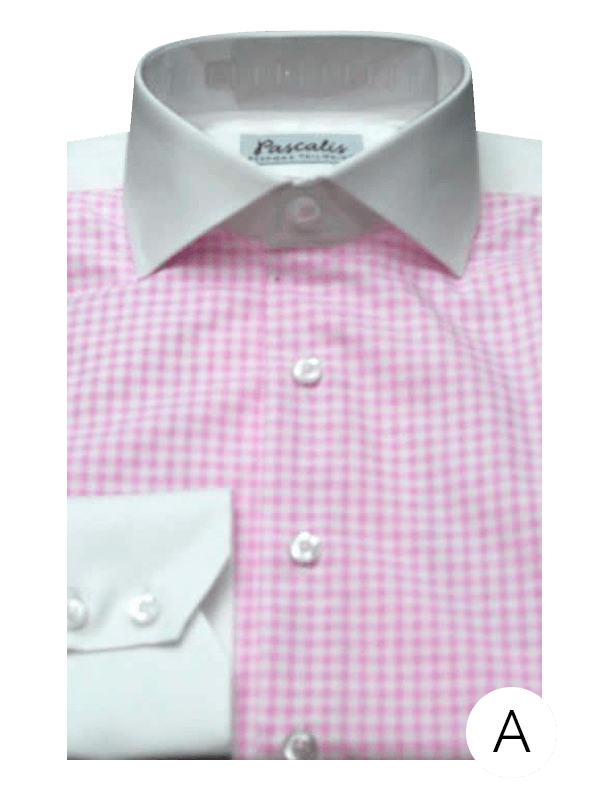
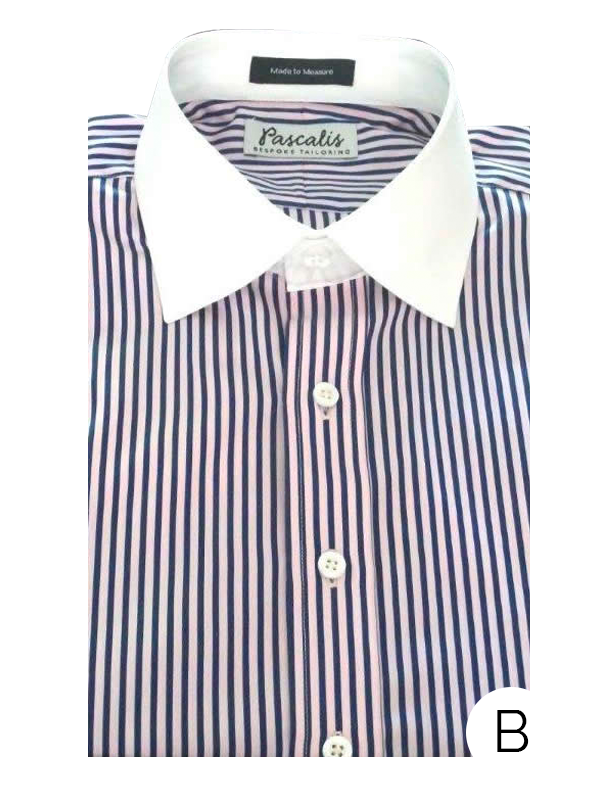
The Super Cutaway Collar (Or Super Wide Spread & Curved Spread Collars)
two variations of classic spread collars; the spread in one has been increased by the collar point's length (in this case to 90 mm). Found only in bespoke circles, the wearer must not only have a firm grasp of the collar style that looks good on him but must be willing to display this grasp of sartorial excellence for all to see.
A. Straight Super Cutaway Collar
B. Curved Super Cutaway Collar
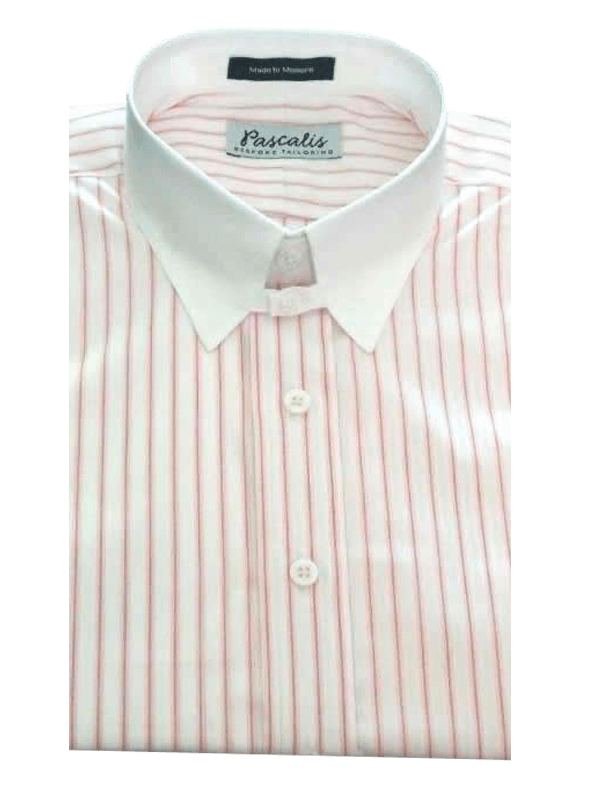
The Tab Collar (Or Tab Collar with Straight points)
the second popular style is the cutaway, or spread collar. These collars have the points ‘cut away’ or spread—revealing more of the upper shirt area and leaving additional room for larger knots such as the Windsor. Like the point, spread collars come in a variety of widths, with more moderate ones resembling slightly flared point collars, while more extreme versions can be nearly horizontal. The particular dimensions are best left to the wearer's preference and body type, with very wide spreads tending to accentuate wider figures while creating a more fully proportioned look on thin gentlemen. With that being said the spread collar is most at home on a man with thin or long facial features; the collar's widening effect help to even out the look of the face. Men with round faces should avoid these collars, unless they plan on wearing them without a tie.
A. The Halfway Cutaway Collar:
B. The Long Peak Cutaway:
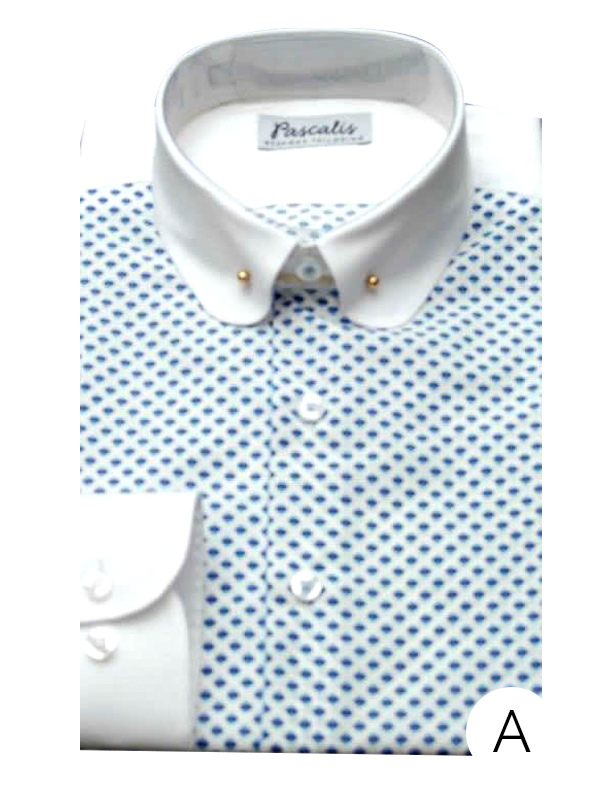
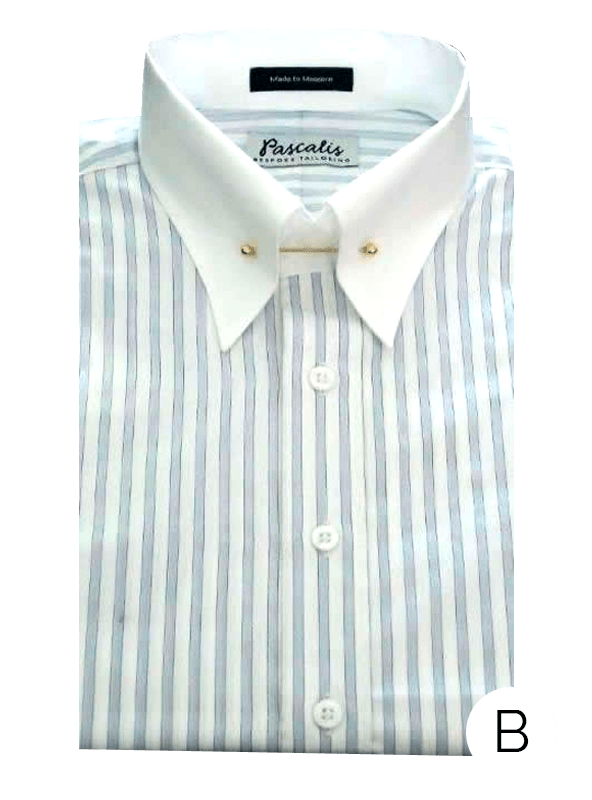
The Pin Collar-round-end / The Pin Collar-straight-point-end (Or Pin Collars round end or straight points)
This collar has small holes in each point, allowing the insertion of a decorative pin or bar behind the tie knot which thrusts the tie knot forward and up while adding extra decoration to the collar itself. Like in the tab collar, this forces the tie forward and up, creating the ‘standing’ look of more elaborate knots. This collar should always be worn with a tie; the empty holes and flapping tabs present an untidy appearance.
A. Straight Super Cutaway Collar
B. Curved Super Cutaway Collar
Cufflink Cuffs and Button Cuffs
Cufflinks are fasteners worn by men to fasten both sides of the cuff. Cufflink buttonholes on both sides of the cuff are necessary to allow this to work. These may be either single or double-length (French) cuffs, and may be worn either ‘kissing,’ with the ends pinched together, or ‘barrel-style,’ with one end overlapping the other. Kissing cuffs are usually the most commonly used.
A Cufflink device may vary in design. The simplest design consists of a short post or chain connecting two disc-shaped parts. The part positioned on the most visible side is usually larger; a variety of designs can connect the smaller piece: It is small enough to fit through the button hole like a button would; it may be separated and attached from the other side; or it may have a portion that swivels on the central post, aligning with the post while the link is threaded through the button-hole and swivelling into a position at right angles to the post when worn.
‘Dumbbell’ or shank-style cufflinks were popular during the early-20th century, particularly in America.
The visible part of a cufflink is often decorated in some appealing way. There are numerous styles including novelty cufflinks, traditional cufflinks, contemporary cufflinks, and corporate cufflinks.
